The Laura Plantation Tour takes visitors on a captivating journey through Louisiana’s rich Creole heritage. Nestled along the picturesque Great River Road, this 1805 Creole-style mansion offers a profound glimpse into the lives of the Duparc family and the enslaved individuals who lived and worked on the plantation. Passionate guides share compelling stories from family memoirs and historical records, shedding light on the complexities of Creole culture and the lasting impact of plantation history. As visitors explore the meticulously preserved rooms, slave quarters, and gardens, they’ll uncover the intricate tapestry of this remarkable site – a tapestry that continues to shape the identity of the region.
Key Points
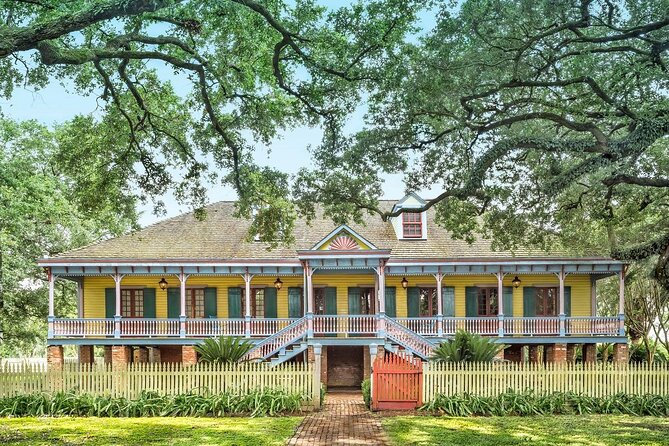
- The Laura Plantation offers a guided tour that provides insight into Louisiana’s Creole history and the lives of the Duparc family and enslaved individuals.
- The tour features a Creole-style mansion, slave quarters, gardens, and sugar fields, utilizing family memoirs and French National Archive records for storytelling.
- The plantation is listed on the National Register of Historic Places and the Louisiana African American Heritage Trail, offering an educational and memorable experience.
- Guides are praised for their passionate and knowledgeable storytelling, and the tour boasts a perfect 5.0 rating from hundreds of reviews.
- The tour highlights the rich Creole culture and the harsh realities of slavery, juxtaposing the Duparc family’s traditions with the experiences of the enslaved individuals.
Overview and Historical Significance
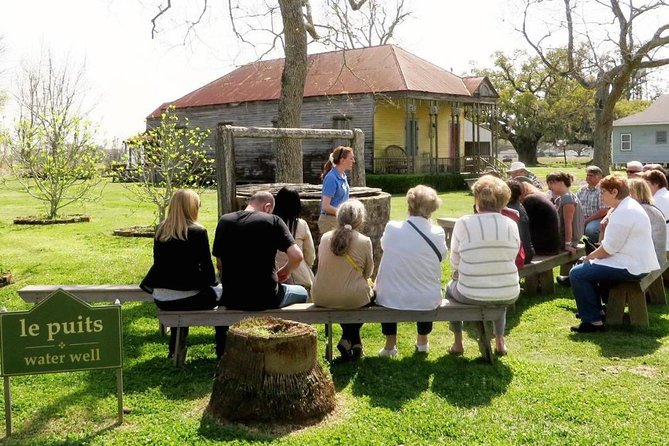
Laura Plantation, founded over 200 years ago in 1804, offers visitors a captivating glimpse into Louisiana’s rich Creole history.
Located just an hour from the vibrant city of New Orleans, this well-preserved estate along the scenic Great River Road showcases the lives of the Duparc family and the enslaved individuals who once called it home.
Listed on both the National Register of Historic Places and the Louisiana African American Heritage Trail, the plantation provides a unique opportunity to take in the fascinating cultural legacy of this region.
Through guided tours and educational exhibits, visitors can gain a deeper understanding of Creole traditions and the complex history that shaped this remarkable property.
You can also read our reviews of more tours and experiences in New Orleans.
Tour Details
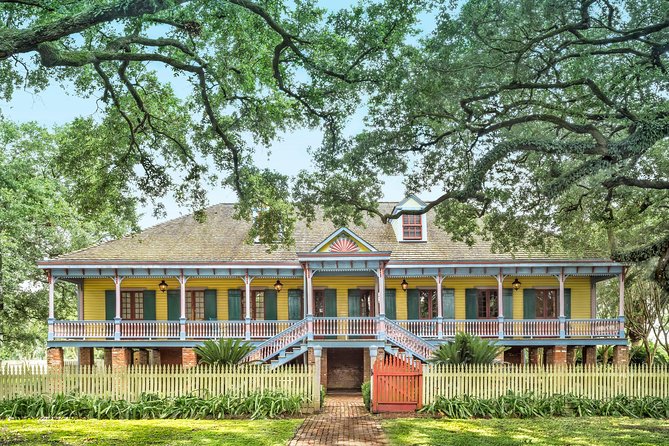
The guided tour at Laura Plantation immerses visitors in the rich history of the estate, showcasing the 24,000-square-foot Creole-style mansion built in 1805, the captivating slave quarters, the verdant gardens, and the expansive sugar fields that once sustained the property.
Knowledgeable guides lead the tour, drawing from family memoirs and French National Archive records to share detailed accounts of the Duparc family’s life and the experiences of the enslaved individuals who lived there.
Guests are taken through the meticulously preserved rooms of the main house, learning about the architecture and decor that reflect the Creole culture.
The tour also explores the humble slave quarters, providing a stark contrast and deeper understanding of the plantation’s complex history.
Visitor Experience and Accessibility
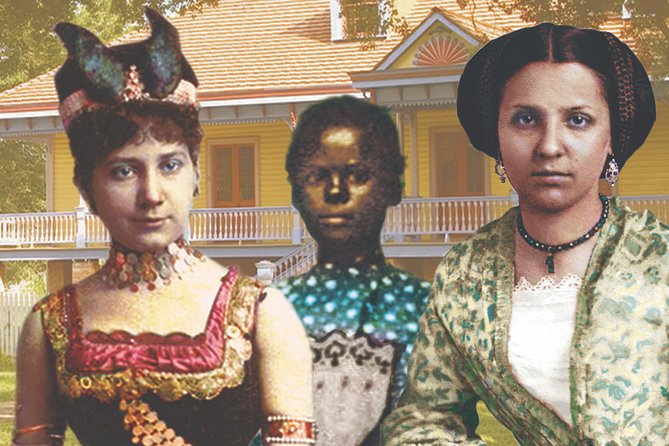
Visitors must drive to the plantation, as transportation from New Orleans isn’t provided.
The plantation isn’t wheelchair accessible, but strollers and service animals are allowed.
The tour accommodates a maximum of 16 travelers and operates in all weather conditions, so visitors are encouraged to wear good walking shoes as part of the tour takes place outdoors.
Exploring the well-preserved estate, guests can enjoy the Creole history and culture of the region.
The guided tour offers a personalized experience, allowing visitors to learn about the lives of the Duparc family and the enslaved individuals who lived on the plantation.
With its informative and engaging nature, the Laura Plantation tour provides an educational and memorable experience for all who visit.
Reviews and Recommendations
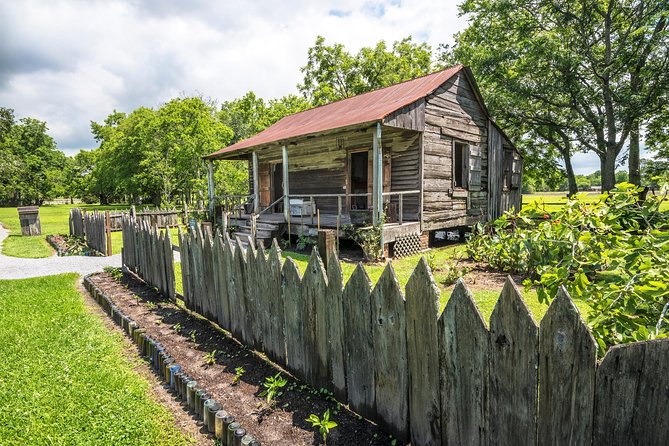
Reviews from tour-goers rave about the passionate and knowledgeable guides, who provide an informative and engaging experience that brings the plantation’s history to life.
Travelers consistently praise the tour, with 984 reviews earning a perfect 5.0 rating. Many recommend the experience, especially for those interested in the history of slavery and Creole culture.
Visitors are captivated by the personal stories and historical details shared throughout the tour, leaving them with a deeper appreciation for the rich heritage of the Laura Plantation.
The experience is noted as both educational and memorable, with some suggesting a visit to the separate on-site museum to further explore the plantation’s fascinating past.
Additional Sites Along Great River Road
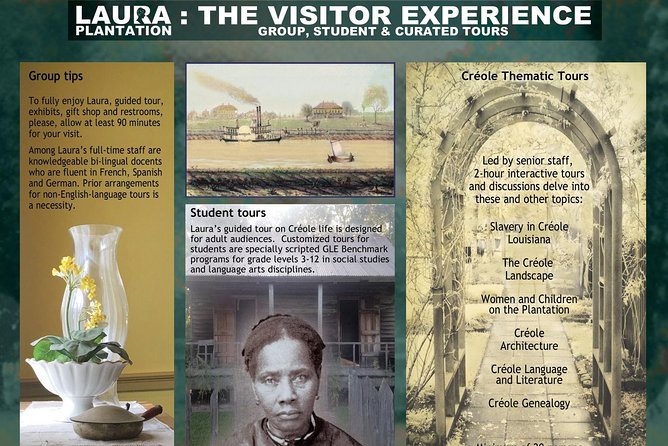
Tourists exploring the Great River Road can discover a wealth of other historic plantations in the region, each offering a unique glimpse into Louisiana’s storied past.
Just a short drive from Laura Plantation, visitors can tour Oak Alley, renowned for its grand alley of 300-year-old live oak trees.
Further along the river, the Houmas House Plantation showcases the opulent lifestyle of 19th-century sugar barons.
For those seeking a more intimate experience, the Whitney Plantation provides a powerful and poignant exploration of slavery’s legacy.
With each plantation offering its own captivating narrative, travelers can enjoy the diverse cultural tapestry that defines the Great River Road experience.
- Where to Stay in New Orleans Near the Superdome: Whitney Hotel Review
- Where to eat in New Orleans – On St. Claude Avenue & In The Marigny
- Exploring New Orleans: A Visit to Audubon Zoo
- Free Things to Do in New Orleans – Stroll Through Armstrong Park
- Things to Do in New Orleans – Visit the New Orleans Museum of Art (NOMA)
- Free things to do in New Orleans – Stroll down Magazine Street
Cancellation and Payment Options
Flexible payment options and free cancellation policies make planning a visit to Laura Plantation convenient for travelers. With just 24 hours’ notice, visitors can cancel their reservation at no cost. This allows them to easily adjust their itinerary should plans change. Reservations can also be made with various payment methods, including credit cards and PayPal. This gives guests the flexibility to book when it suits them best.
| Payment Options | Cancellation Policy |
|---|---|
| Credit Card | Free up to 24 hours before tour |
| PayPal | Flexible scheduling |
| Mobile Wallet | Hassle-free changes |
The hassle-free booking process and liberal cancellation terms ensure a stress-free experience from start to finish when exploring the rich history of Laura Plantation.
Personal Storytelling and Appreciation
Visitors to Laura Plantation are captivated by the passionate storytelling of the knowledgeable guides, who bring the estate’s rich history to life through detailed accounts and personal narratives.
Travelers are transported back in time as guides share:
- Vivid descriptions of the Duparc family’s daily lives and traditions
- Heartbreaking stories of the enslaved individuals who toiled in the sugar fields
- Firsthand accounts drawn from family memoirs and French National Archive records
- Insights into the resilience and perseverance of the Creole community
Visitors consistently express their deep appreciation for the informative and engaging nature of the tour, leaving with a newfound understanding and respect for Louisiana’s complex history.
Creole Culture and Slavery History
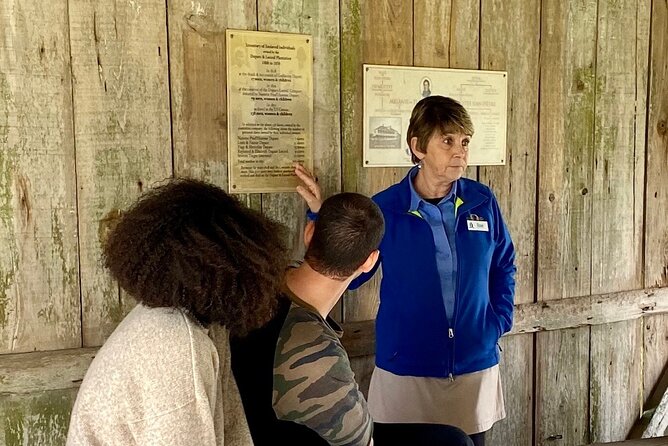
The tour of Laura Plantation immerses guests in the rich Creole culture and sobering history of slavery that shaped Louisiana’s past. Guides expertly weave together stories of the Duparc family’s traditions and the harsh realities faced by the enslaved individuals who toiled in the sugar cane fields, providing visitors with a multifaceted understanding of the plantation’s complex legacy. Through this intimate exploration, travelers gain a deeper appreciation for the resilience and hardships experienced by the diverse communities who left an indelible mark on the region.
| Creole Traditions | Enslaved Labor | Plantation Legacy |
|---|---|---|
| Distinctive architecture | Backbreaking work in fields | Stories of oppression |
| Lavish celebrations | Cramped living quarters | Perseverance of the enslaved |
| Blending of French, African, and Caribbean cultures | Brutal punishment and lack of autonomy | Ongoing impact on Louisiana’s identity |
| Family histories and memoirs | Separation of families | Preservation of historical records |
Frequently Asked Questions
Can I Take Photographs During the Tour?
Visitors are generally allowed to take photographs during tours, though some venues may have restrictions. It’s best to check with the tour operators beforehand to ensure you can capture the experience as you wish.
What Languages Are the Tours Offered In?
The tours at Laura Plantation are offered in English and French, catering to both domestic and international visitors. Guests can enjoy the plantation’s Creole history through the guided experiences available in multiple languages.
Is Food or Refreshments Available On-Site?
The plantation does not offer food or refreshments on-site. Visitors should plan to bring their own snacks and drinks to enjoy during the tour. There are no dining options available, so guests should come prepared with their own provisions.
Are There Any Gift Shops or Shopping Opportunities?
Visitors will find a gift shop on-site offering a variety of Creole-inspired souvenirs and local products. It’s the perfect spot to pick up mementos from their visit and support the plantation’s preservation efforts.
How Long Does the Entire Tour Last?
The guided tour typically lasts around 1.5 to 2 hours, providing visitors with a comprehensive exploration of the plantation’s history, architecture, and the lives of its former inhabitants through knowledgeable commentary and immersive experiences.
Recap
The Laura Plantation Tour offers a profound encounter with Louisiana’s Creole heritage and the complex history of plantation life.
Visitors are immersed in the Duparc family’s story, while also confronting the harsh realities of slavery that shaped the region.
Through passionate storytelling and meticulously preserved grounds, the tour provides an enlightening and thought-provoking experience, leaving a lasting impact on all who explore this important piece of American history.
More Tours in New Orleans
More Tour Reviews in New Orleans
Not for you? Here's more things to do in New Orleans we have recnetly reviewed
- New Orleans Yellow Fever Ghost Tour
- Crescent City Chronicles: The Heart of New Orleans
- New Orleans: Haunted Pub Crawl
- New Orleans: Daytime City Helicopter Tour
- New Orleans : Best of Ghost & Voodoo Experience Walking Tour
- New Orleans: Bayou Tour in Jean Lafitte National Park
- Glamorous Garden District Tour
- New Orleans: Garden District Food, Drinks & History Tour
- New Orleans Garden District Walking Tour Including Lafayette Cemetery No. 1
- New Orleans: City & Cemetery Tour by Air-Conditioned Minibus
- New Orleans: Tremé African American & Creole History Tour
- New Orleans: Traditional City and Estate Tour
